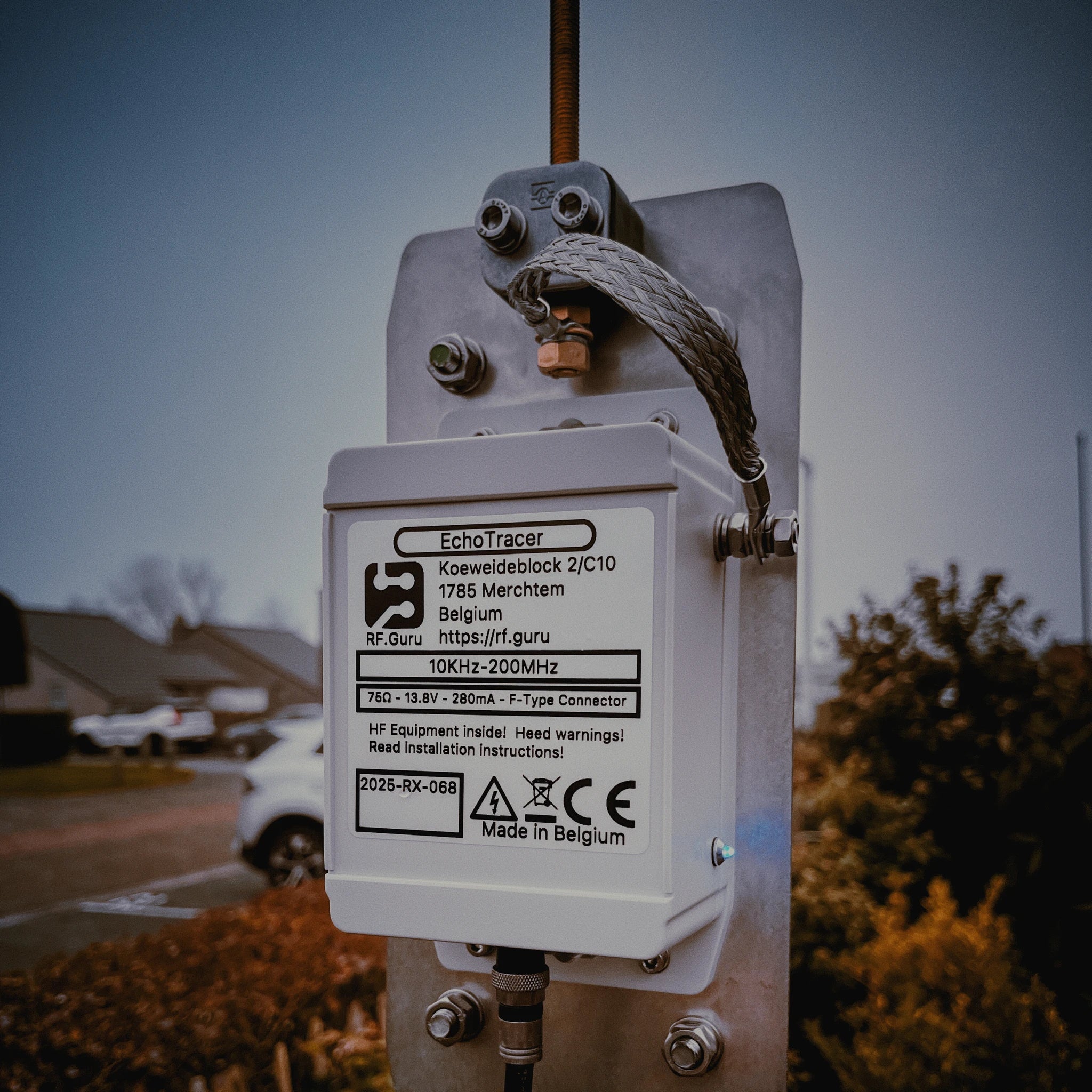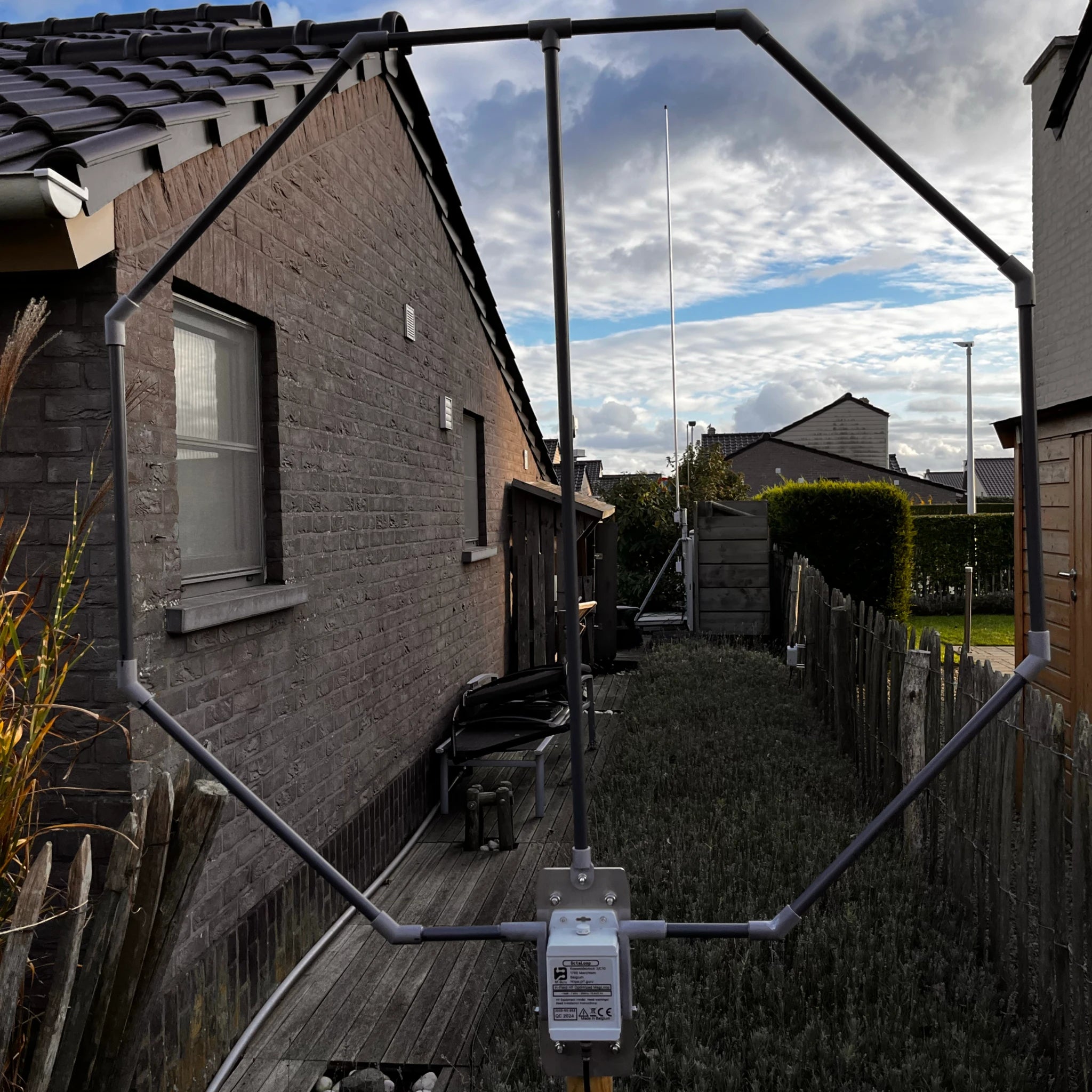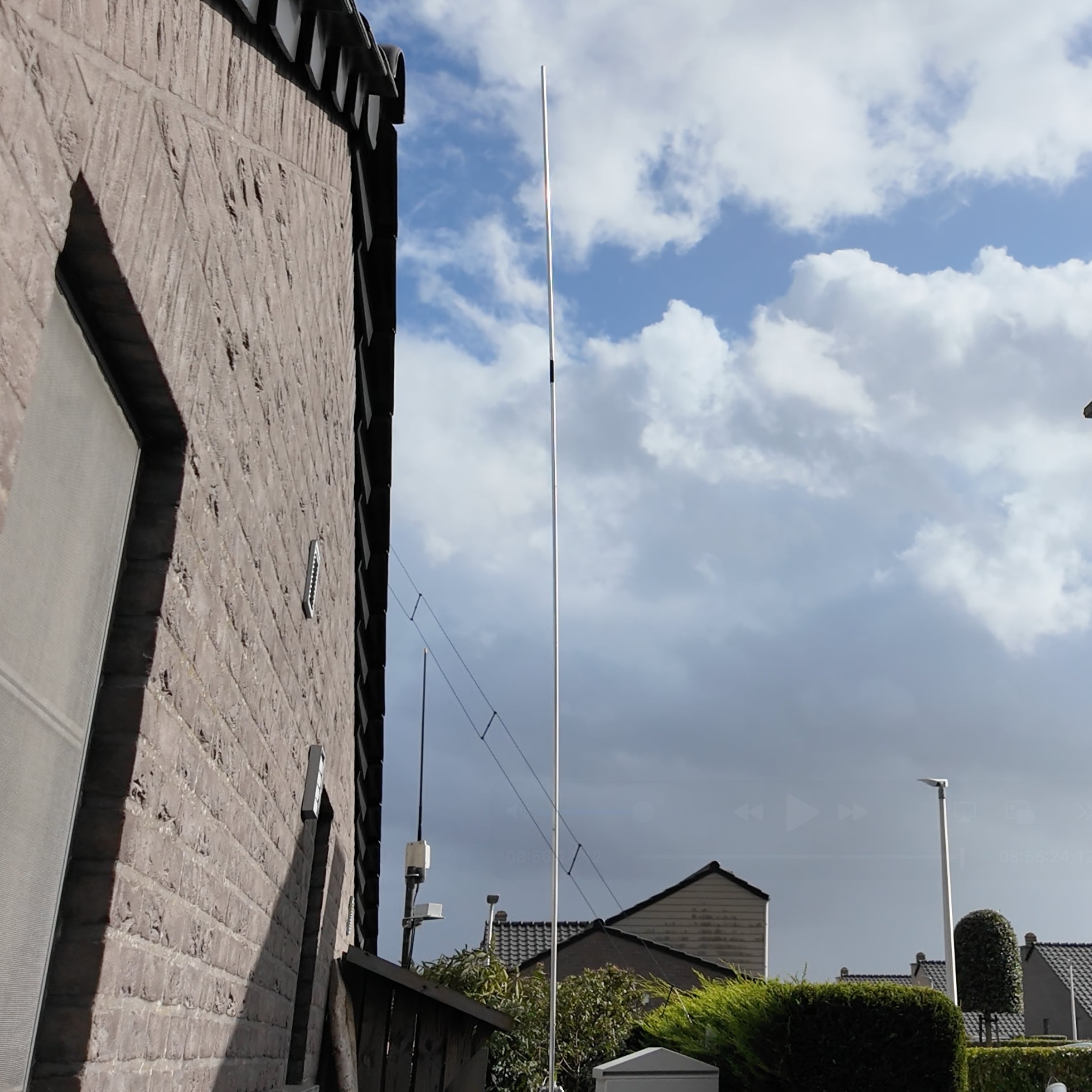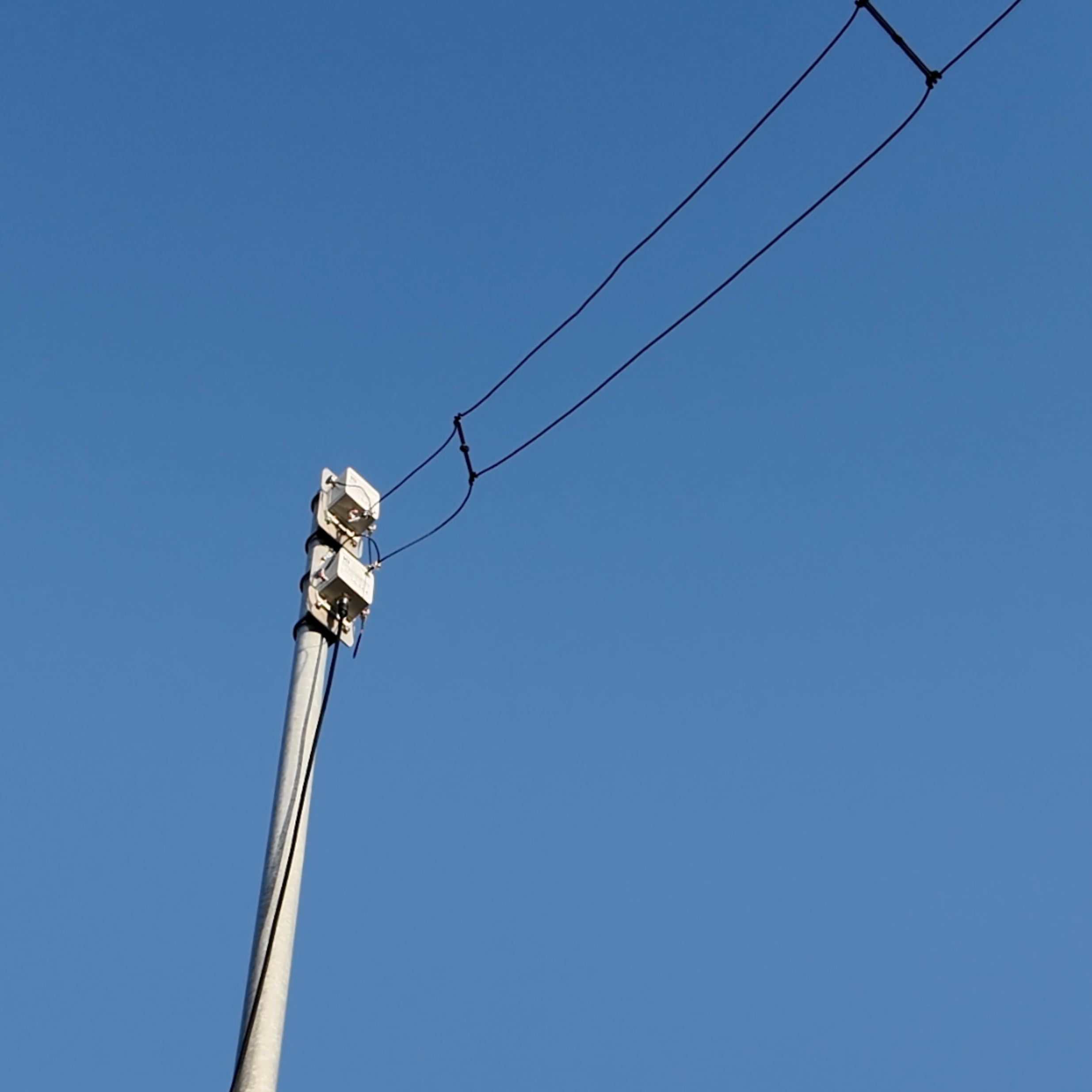The Lombardsijde Listening Station – Discover the World of Antennas
Updated October 20 2025
Welcome to Lombardsijde, home of the coastal listening post of Joeri Van Dooren – ON6URE, together with his son Jonas and nephew Jonathan Van Dooren. RF.Guru is proudly a family company based in Belgium, designing and manufacturing all antennas right here.
Hidden in a quiet vacation park, this small QTH (ham term for “station location”) listens to the world — from long-distance DX signals (meaning faraway radio contacts) to aircraft, ships, and time beacons. Everything you see here is designed to demonstrate that high‑performance listening is possible even in a small coastal garden.
About RF.Guru
RF.Guru is a Belgian family engineering company founded by Joeri, Jonas, and Jonathan Van Dooren. Together they design and build advanced antennas and RF accessories for amateur-radio operators and scientific listeners worldwide — all proudly made in Belgium.
What You Can Hear
Even without a transmitter, there’s plenty to listen to! Our receive antennas let you hear ham‑radio operators across continents, international AM stations, Weather FAX maps for ships, maritime broadcasts, time‑signal clocks like Germany’s DCF77 or the UK’s MSF, and much more. “QRM,” in ham language, means man‑made interference — something we carefully minimize using smart antenna designs.
About the UBA
The UBA (Union Royale Belge des Amateurs-Émetteurs) is Belgium’s national amateur-radio society. It connects enthusiasts across the country, organizes events and training, and represents Belgium internationally in the IARU. Most active Belgian ham-radio operators — including our team here at RF.Guru — are proud UBA members. You can learn more on their official website: www.uba.be.
Receive Antennas (RX)
Each receive antenna has a different way of sensing signals — either through electric or magnetic fields — allowing us to pick up the weakest transmissions even with nearby noise sources.
EchoTracer

The EchoTracer is an active electric‑field antenna optimized for long‑wave and HF listening. It hears everything from distant AM radio to digital ham modes worldwide.
OctaLoop

The OctaLoop is a broadband magnetic antenna that rejects nearby electrical noise, making distant “DX” signals stand out clearly even in noisy urban areas.
OctaLoop Mini

The OctaLoop Mini brings the same quiet performance to smaller gardens or balconies. Despite its size, it performs on par with larger loops for short‑wave and ham bands.
What are ham bands? In radio terms, “bands” are just slices of the frequency spectrum that amateur radio operators are allowed to use. Each band — like 40 meters, 20 meters, or 10 meters — corresponds to a specific range of frequencies. Some work best for nearby contacts, while others can reach halfway around the world depending on time of day and solar conditions.
TerraBooster

The TerraBooster is a ground-mounted H-field antenna, about 38 meters long, running all the way around the perimeter of the plot just beside the fence. Installed low to the soil, it senses magnetic fields instead of electric ones. Being close to the ground helps it reject QRM (man-made noise) while picking up stable regional and DX signals from afar.
Software‑Defined Receivers (SDR)
All these antennas feed into web‑connected SDRs — digital receivers that let anyone tune in through a browser. Using a Web‑SDR, you can move across frequencies, watch the colorful “waterfall” of signals, and listen to live radio from anywhere.

The small boxes you see in this rack each handle a specific antenna. A companion service called PSKReporter shows on a world map where the antennas have received digital FT8 signals — a visual proof of how far the station hears.
- SDR1: EchoTracer Checking… (pskreporter)
- SDR2: OctaLoop Checking… (pskreporter)
- SDR3: TerraBooster Checking… (pskreporter)
- SDR4: OctaLoop Mini Checking… (pskreporter)
If a status shows “Offline,” maintenance may be in progress — please check back later.
Live SDR Spots Map
You can also explore what the antennas are hearing right now through our live map at sdrspots.rf.guru. This dashboard shows real-time “spots” — individual radio signals detected by each active antenna in Lombardsijde. Every colored marker represents a station heard at that very moment. The map updates continuously, giving you a live view of how the antennas pick up worldwide signals across different bands.
ADS‑B Aircraft Tracking
The ADS‑B system listens to aircraft transponders. Its small black antenna, just 20 cm long on the fence by the parking area, can detect planes hundreds of kilometers away.
- ADS-B: Aircraft location system Checking…
If a status shows “Offline,” maintenance may be in progress — please check back later.
AIS Maritime Tracking

AIS (Automatic Identification System) receives radio beacons from vessels, showing their live locations on this map.
APRS – Local Activity

APRS (Automatic Packet Reporting System) tracks ham‑radio transmitters and weather stations in motion. Our antenna covers the surrounding region.

Transmit Antennas (TX)
While most setups here only listen, a few antennas are for licensed ham transmission. Two different types are used — each with its own behavior.
IronWave 9 – Vertical Antenna

A vertical antenna radiates in all directions horizontally, ideal for reaching distant stations (DX). Its shape helps launch signals that bounce off the ionosphere to travel across the world.
TermiLoop – Horizontal Loop

The TermiLoop, used occasionally, forms a big horizontal circle. Unlike verticals, horizontal loops favor closer regional coverage and quieter local contacts — the two complement each other perfectly.
Mini‑FAQ
- Can visitors see the antennas? — Yes! Many are visible around the house; the low wooden logs hold the TerraBooster, and tall verticals rise by the fence.
- What can be heard? — Ham‑radio signals, short‑wave broadcasters, aircraft, ships, and even weather fax maps and time signals.
- Is it open to the public? — It’s private, but the SDR receivers are open online for anyone to explore.
If you’re staying in the park, feel free to walk by and look for the low log‑mounted antennas and small fence‑mounted receivers — they’re part of this living radio laboratory!
If you’d like to learn how all of this works, have a look at our beginner-friendly guide Ham Radio 101 – The RF Engineering Behind the Signals. It explains radio concepts step by step — from how antennas radiate to how signals travel around the Earth — helping newcomers understand the fascinating science behind amateur radio.
Interested in more technical content? Subscribe to our updates.
Questions or experiences to share? Contact RF.Guru.